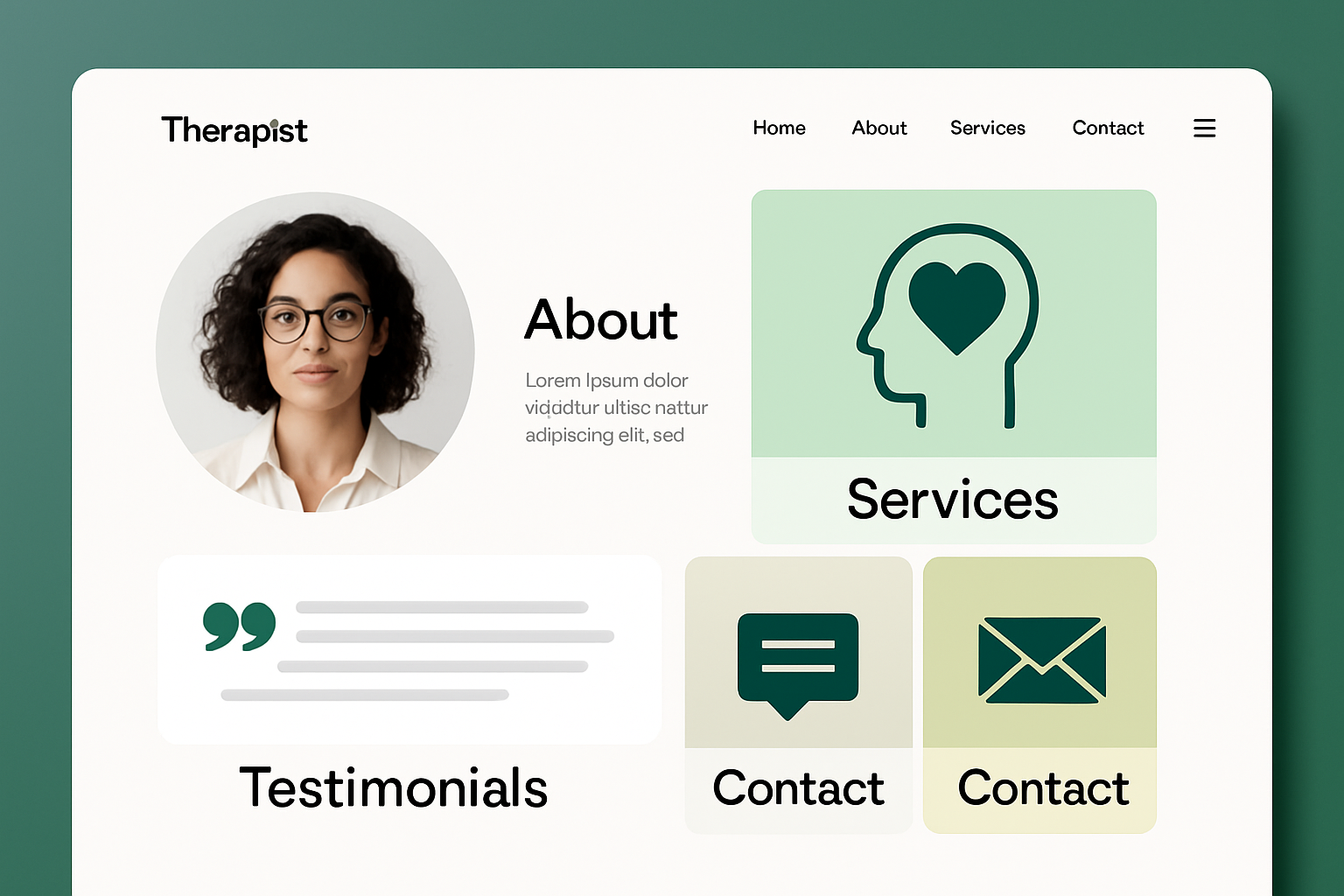
What Is A Superbill And How Can Therapists Use It?
A superbill is a vital billing document that helps therapists and clients navigate insurance reimbur...
Learning how to get more clients as a therapist starts with recognizing that marketing plays a key role in growing your practice and connecting with more clients. While delivering excellent care remains the heart and soul of what you do, how you present yourself and engage with potential clients often makes all the difference in not just attracting them but keeping them coming back. Thoughtful marketing isn’t just about getting noticed—it’s about building trust and credibility that lays the foundation for lasting relationships.
Understanding who your ideal client is can really help you tailor your marketing so it feels spot on and hits the mark. When you dive into demographics and main needs and pain points your message tends to resonate more deeply with the right audience
Your website often serves as the first impression potential clients get of your practice. Having a clear and welcoming site that explains who you are and what services you offer can help build trust from the start. Adding client testimonials and useful resources subtly showcases your professionalism and expertise and gives visitors the reassuring nudge they need.

Creating valuable content is a powerful way to position yourself as a trusted expert in your field and make potential clients feel genuinely seen and understood long before you get a chance to connect. Whether you are crafting blogs, recording videos or launching podcasts, sharing your insights answers the usual questions.
Making your online presence work for you locally is absolutely key, especially if you often meet clients face to face. Claiming your Google My Business profile and keeping your details consistent across various directories can seriously up your game when it comes to popping up in local search results
| Directory Name | Cost | Client Reach | Key Features | Ease of Use |
|---|---|---|---|---|
| Psychology Today | Moderate | Very High | Detailed therapist profiles, specialty filters to narrow down your search, plus an insightful blog to boot | |
| User-friendly | ||||
| TherapyDen | Free | High | Inclusive practitioner listings that really welcome diversity, with direct messaging to connect effortlessly | |
| Simple | ||||
| GoodTherapy | Moderate | High | Verified credentials to put your mind at ease, along with helpful educational resources | |
| Fairly easy | ||||
| Zencare | Higher | Moderate | Engaging video introductions and handy teletherapy options that make finding help a bit more personal | |
| Fairly easy | ||||
| Healthgrades | Free/Paid | Wide healthcare audience | Handy reviews and ratings, plus a mobile-friendly design that’s easy to navigate on the go | |
| Easy |
Having solid referral relationships with healthcare professionals, community groups and peers usually brings in new clients steadily. Building these connections doesn’t happen overnight. It requires effort and regular check-ins and consistently offering value through teamwork or educational events.
Picking the right social media platforms and consistently sharing thoughtful, ethical content is the secret sauce to really connecting with potential clients and showing the human side of your practice.
Email still stands out as a trusty tool to nurture relationships with potential clients. When you carefully craft a targeted email list and send out newsletters packed with genuinely useful insights, you’re not just keeping individuals in the loop—you’re building trust and keeping your practice top of mind.
When learning how to get more clients as a therapist, setting clear marketing goals and keeping a regular eye on your analytics is key to figuring out what’s actually working and where you might need to tweak things.
Consistent, thoughtful marketing isn’t just about casting a wider net and hoping for the best. It’s really about earning trust and nurturing lasting relationships that quietly but surely help your therapy practice grow over time.
Results can vary but most therapists start to notice more inquiries after 3 to 6 months of consistent marketing. SEO and directory listings usually take 6 to 12 months to gain traction as they build momentum. Social media and networking often bring quicker wins, almost like the fast lane compared to SEO. It’s wise to keep a close eye on your metrics every month so you can fine-tune your approach and maybe speed things up.
Not at all. In my experience, effective strategies like SEO, content marketing and networking lean more on your time and creativity than your wallet. Free tools such as Google My Business and social media platforms can boost your practice without breaking the bank. If you do have some budget, it’s smarter to invest in a solid website and targeted ads than on pricey broad campaigns that may not deliver.
Keeping client privacy intact is vital. Always switch up names, omit unessential details and get verbal or written permission before sharing anything. Instead of focusing on identities, highlight broader outcomes like “a client with anxiety learned coping techniques.” Also, avoid specific or unusual conditions that might reveal someone. It’s a delicate balance but with care, you can celebrate successes without crossing lines.
Generally, Instagram and LinkedIn tend to be the top picks. Instagram connects you with a younger crowd—from teens to those in their 40s—thanks to its visual vibe. LinkedIn is more professional and ideal for reaching colleagues and referral sources. I usually recommend starting with one platform to keep things manageable then branching out once you know where your ideal clients hang out online.
The biggest misstep is not getting clear on their ideal client. It’s tempting to say “I help everyone” but that broad approach waters down your message and leaves you blending into the background. Instead, zoom in on specific groups and challenges like “therapy for new parents dealing with postpartum anxiety.” This helps you attract the right people and stand out when individuals search online.
Many therapists juggle basic marketing themselves using handy templates and scheduling tools—no rocket science involved. But if you feel swamped, it’s okay to outsource pieces like SEO or graphic design without handing over the whole shebang. My two cents? Focus on what you do best and gradually delegate the rest as your practice grows. It keeps things manageable and lets you play to your strengths.

A superbill is a vital billing document that helps therapists and clients navigate insurance reimbur...

Wondering if therapists take insurance? Discover how insurance impacts therapy access and learn prac...

Learn actionable steps therapists can take to boost therapist referrals, enhance credibility, and ex...

Discover the essential features of therapy practice management software that enhance efficiency, com...